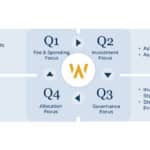Fulfill Your Financial Aspirations
Our wealth advising team can help
optimize your financial life


client experience
We really get to know you
Each relationship revolves around a comprehensive plan built on a thorough understanding of your goals. Our advisors are supported by an internal team of experts dedicated entirely to identifying the best possible investment solutions for clients.
Our Firm at a Glance
$25.26B
Assets Under Management*
1995
Year Founded
300+
professionals
*Reflects combined AUM as of 12.31.2023 for Wealthspire Advisors LLC and its subsidiaries.





Our Latest News & Resources

Trust & Estate Considerations for Art & Collectible Owners and Inheritors
Owning and ultimately gifting art and collectibles brings unique challenges to its current owners and potential inheritors. Unlike traditional investments and real estate, the marketability …




2024 1st Quarter Commentary: “In a world drenched in pessimism, it pays to be optimistic.”